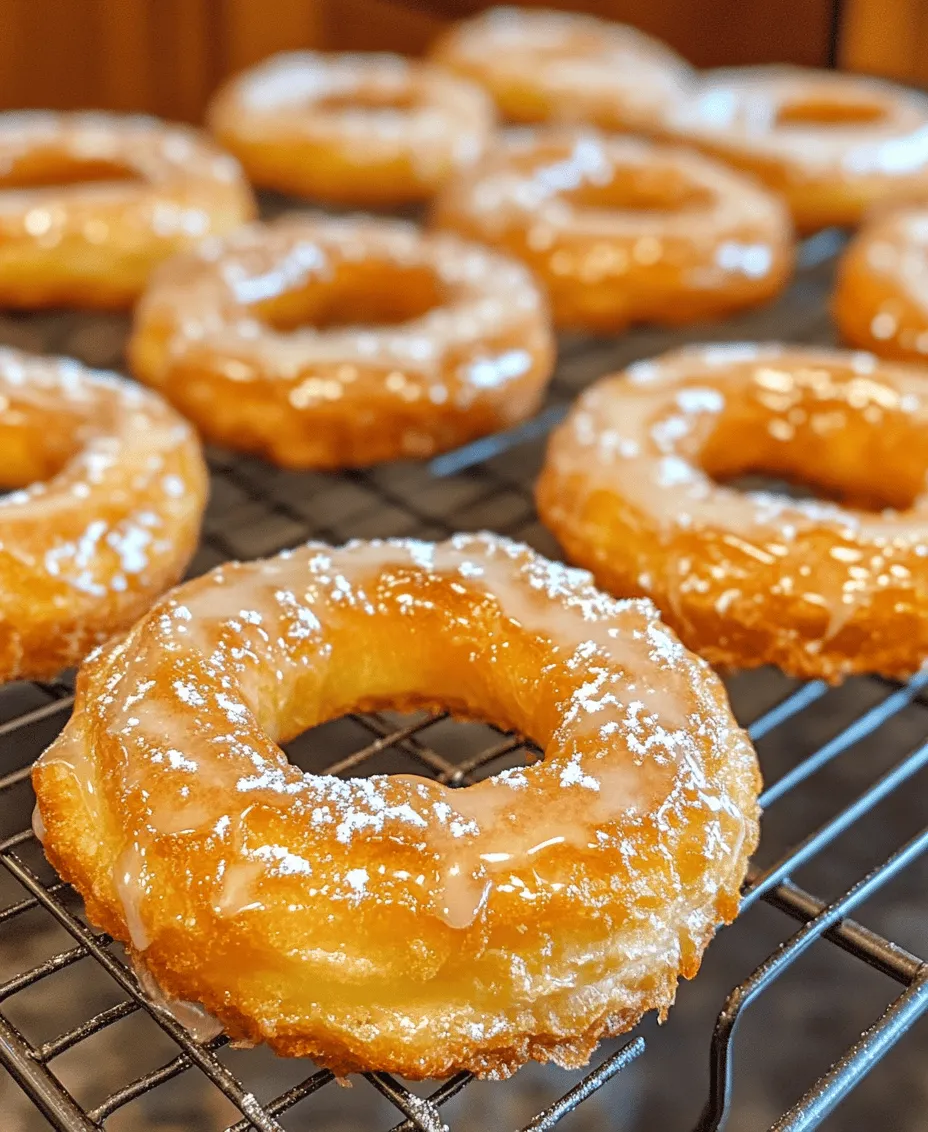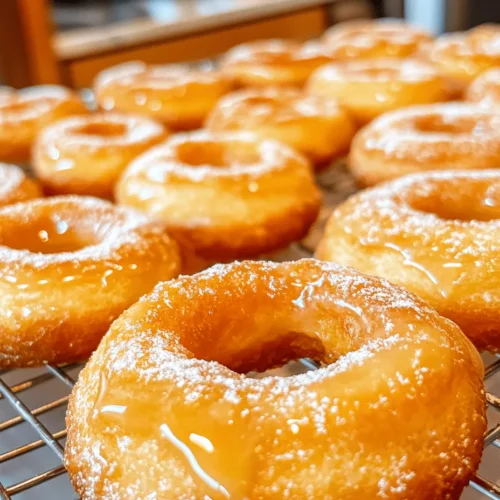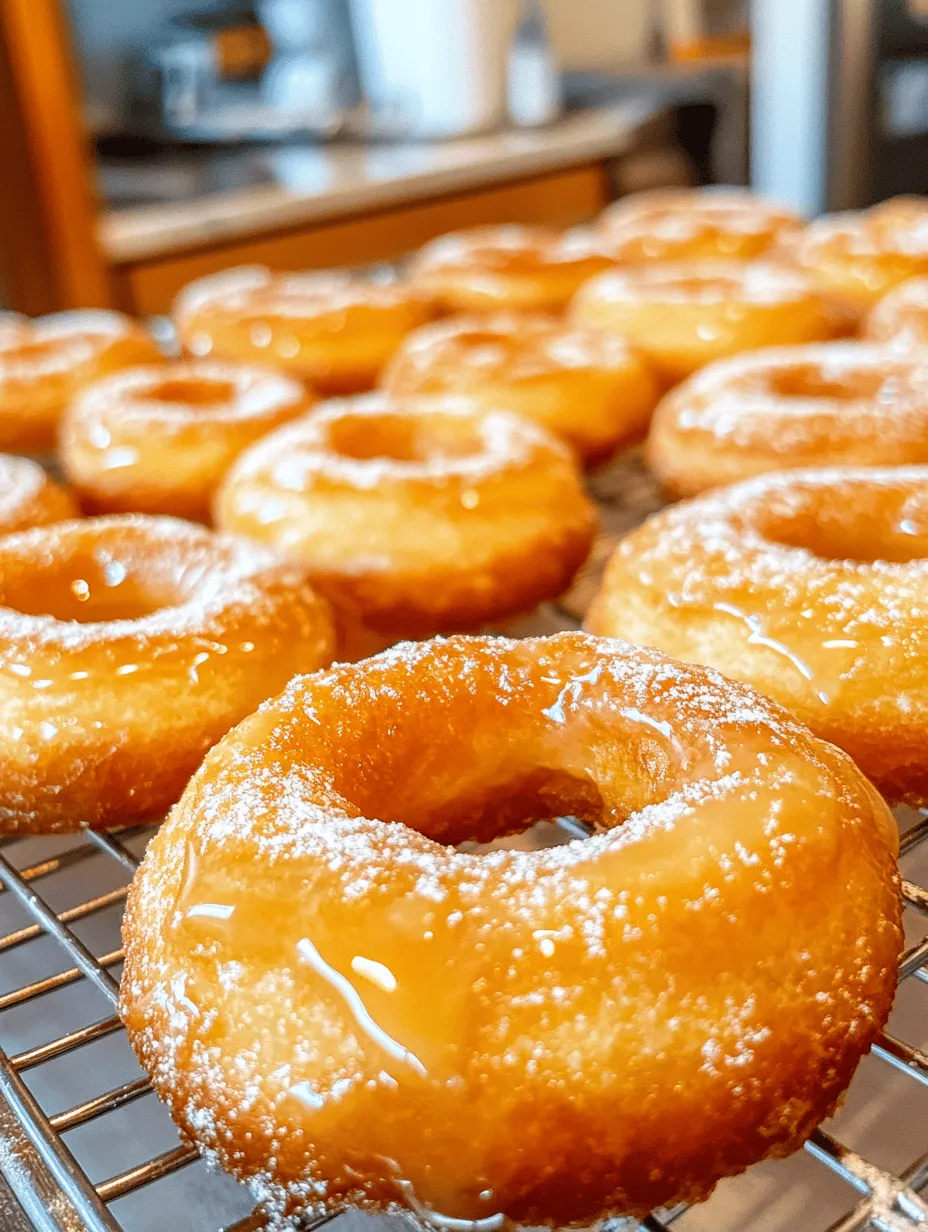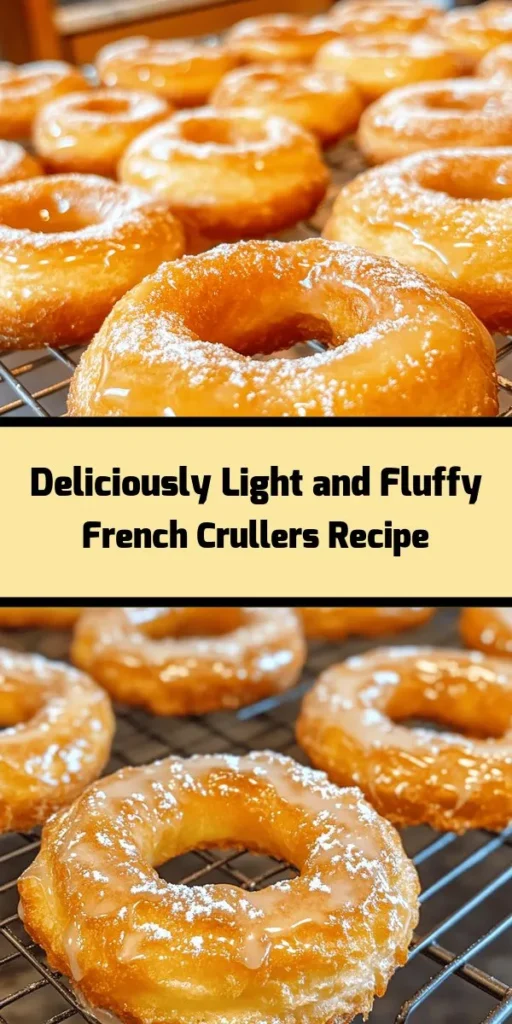Introduction
French crullers, often celebrated as one of the most delightful pastries, have captured the hearts of dessert lovers around the world. With their unique toroidal shape and airy texture, these pastries stand out in the realm of doughnuts. Unlike their denser counterparts, crullers offer a light, ethereal bite that melts in your mouth, making them a favorite choice for breakfast or a sweet afternoon treat. Their subtle sweetness, combined with a hint of vanilla and a delicate glaze, creates a harmonious flavor profile that is both comforting and indulgent.
The act of preparing homemade treats, like French crullers, plays a significant role in crafting memorable culinary experiences. When you make crullers from scratch, you not only fill your kitchen with the enticing aroma of frying dough but also create a sense of nostalgia and warmth that store-bought pastries often lack. The process of making these delightful treats becomes a cherished activity, whether shared with family or savored in solitude.
Understanding French Crullers
The history of French crullers is as rich as their flavor. Originating from French cuisine, these pastries have been enjoyed for centuries, often associated with festive occasions and celebrations. The name “cruller” is derived from the Dutch word “krullen,” meaning “to curl,” which aptly describes the twisted shape of these fried dough rings. Traditionally, crullers were made with a simple choux pastry dough, which is distinctive in its preparation compared to other doughnut varieties.
What sets crullers apart from other types of doughnuts is their unique preparation method and texture. While most doughnuts are made from a yeast-based or cake batter, crullers are crafted from a choux pastry that is piped into a ring shape and then fried. This technique results in a light, airy texture that is unlike any other doughnut. The dough puffs up when fried, creating a crisp exterior while maintaining a soft, tender interior.
Globally, crullers have taken on various forms and interpretations. In France, they are often enjoyed plain or lightly glazed, while in other cultures, crullers may be infused with spices or served alongside rich dipping sauces. This versatility highlights the cultural significance of crullers, as they adapt to local tastes and traditions while maintaining their core identity as a beloved pastry.
Ingredients Breakdown
To create heavenly French crullers, understanding the key ingredients and their roles in the recipe is essential. Here’s a closer look at what you’ll need to bring this delightful pastry to life:
1. Unsalted Butter: The foundation of flavor in this recipe, unsalted butter is crucial for achieving the rich taste that defines crullers. Its creamy texture contributes to the dough’s consistency and helps create a delicate crumb. Opting for high-quality butter enhances the overall flavor profile of the crullers.
2. Eggs: Eggs play a pivotal role in providing structure and stability to the dough. They also contribute to the crullers’ light and airy texture. As the dough cooks, the proteins in the eggs coagulate, helping the cruller maintain its shape while providing a tender interior.
3. All-Purpose Flour: The choice of flour is vital in determining the final texture of the crullers. All-purpose flour strikes a balance between strength and tenderness, allowing the dough to rise properly during frying without becoming overly dense. It’s essential to measure the flour accurately to ensure the dough achieves the right consistency.
4. Powdered Sugar and Milk (for Glaze): The glaze is what elevates crullers from delicious to heavenly. Powdered sugar combined with milk creates a smooth, sweet coating that enhances the overall flavor. The glaze not only adds sweetness but also contributes to the visual appeal of the crullers.
5. Oil for Frying: The choice of oil is crucial for frying crullers to perfection. Neutral oils such as canola or vegetable oil are ideal for frying, as they have high smoke points and won’t impart any unwanted flavors. Proper frying temperature is key to achieving that perfect crispiness without overcooking the dough.
Step-by-Step Guide to Making Heavenly French Crullers
Now that we’ve covered the essential ingredients, it’s time to delve into the step-by-step process of making heavenly French crullers. This detailed guide will ensure that you achieve the ideal dough consistency and texture for your crullers.
Step 1: Prepare the Dough
Begin by gathering all your ingredients and equipment. In a medium saucepan, combine water, unsalted butter, and a pinch of salt. Bring the mixture to a rolling boil over medium heat.
Once the butter has melted completely, remove the saucepan from heat and add the all-purpose flour all at once. Stir vigorously with a wooden spoon until the dough forms a cohesive ball that pulls away from the sides of the pan. This step is crucial, as it activates the flour’s gluten, which will provide structure to the crullers.
Step 2: Incorporate the Eggs
Allow the dough to cool for a few minutes before proceeding to the next step. This is important to prevent the eggs from cooking when added. Once the dough is warm but not hot, crack in the eggs one at a time, mixing thoroughly after each addition. The dough will appear glossy and smooth once all the eggs are fully incorporated.
Step 3: Achieve the Right Consistency
The ideal cruller dough should be thick enough to hold its shape when piped but soft enough to easily flow from the piping bag. If the dough feels too stiff, you can add a small amount of warm water, one tablespoon at a time, until the desired consistency is achieved.
Step 4: Pipe the Crullers
Next, prepare a piping bag fitted with a large star tip. Transfer the dough into the piping bag, ensuring there are no air bubbles trapped inside. Pipe the dough into rings on a parchment-lined baking sheet, making sure to leave enough space between each cruller to allow for expansion during frying.
Step 5: Fry the Crullers
In a heavy-bottomed pot or deep fryer, heat the oil to 350°F (175°C). Use a thermometer to monitor the temperature closely, as this is crucial for achieving the perfect fried cruller. Once the oil is hot, carefully lower the piped dough rings into the oil, a few at a time, to avoid overcrowding.
Fry the crullers for about 2-3 minutes on each side, or until they turn a beautiful golden brown. It’s important to keep an eye on the temperature, as frying at too low a temperature can result in greasy crullers, while frying at too high can cook the exterior too quickly, leaving the inside raw.
Step 6: Drain and Glaze
Once golden brown, remove the crullers from the oil using a slotted spoon and transfer them to a wire rack lined with paper towels to drain excess oil. While the crullers are still warm, dip them into the prepared glaze made from powdered sugar and milk, ensuring an even coating. Allow the excess glaze to drip off before placing them back on the wire rack to set.
With these steps, you’re well on your way to creating heavenly French crullers. Stay tuned for more tips and techniques to perfect your cruller-making skills in the following sections.

Frying Techniques for Perfect Crullers
Achieving the perfect French cruller begins with mastering the frying technique. The oil temperature is crucial for ensuring your crullers cook evenly and develop that desired golden-brown exterior. The ideal frying temperature for crullers is around 360°F (182°C). To measure the oil temperature accurately, you can use a deep-fry thermometer, which provides an exact reading. If you don’t have one, a common trick is to drop a small piece of dough into the oil—if it sizzles and rises to the surface, the oil is hot enough.
When it comes to piping the dough, uniformity is key to ensure even cooking. Use a large piping bag fitted with a star tip to create the classic cruller shape. Start by piping a circle, then continue piping a smaller inner circle to create a ring. To achieve uniformity, practice the motion a few times on a piece of parchment paper before transferring to the hot oil.
Avoid overcrowding the frying pan, as this can lower the oil temperature, leading to greasy and unevenly cooked crullers. Fry only a few at a time, ensuring there’s enough space for each cruller to bubble and float freely. This method not only promotes even cooking but also helps achieve that signature light and airy texture.
As you fry the crullers, keep a close eye on the cooking process. Turn them gently with a slotted spoon to ensure they brown evenly on all sides. Once they reach a lovely golden brown color, remove them from the oil and let them drain on a paper towel-lined plate.
Creating the Perfect Glaze
The glaze is what elevates your crullers from delicious to heavenly. Start by preparing a simple glaze with powdered sugar, milk, and vanilla extract. For a basic glaze, combine 2 cups of powdered sugar with 3 tablespoons of milk and 1 teaspoon of vanilla extract in a bowl. Whisk until smooth and free of lumps. The consistency should be thick enough to coat the back of a spoon but still runny enough to dip the cruller into. If the glaze is too thick, add a tiny bit more milk; if it’s too thin, incorporate a little more powdered sugar.
To enhance the flavor, consider creating variations of the glaze. For a chocolate glaze, melt 1 cup of semi-sweet chocolate chips with 2 tablespoons of butter, stirring until smooth. For a citrus glaze that adds a refreshing twist, substitute the vanilla extract with lemon or orange juice, and add the zest of the fruit for a burst of flavor.
Once your crullers have cooled slightly, dip them into the glaze, allowing any excess to drip off before placing them on a wire rack to set. This technique ensures an even coverage and allows the glaze to harden just slightly, creating a beautiful finish.
Serving Suggestions and Pairings
French crullers are versatile pastries that can be enjoyed at any time of day. For breakfast, serve them warm alongside a steaming cup of coffee or tea. They make a delightful addition to a brunch spread, paired with fresh fruit, yogurt, and various breakfast pastries.
For dessert, crullers can be served on their own or accompanied by a scoop of vanilla ice cream or a dollop of whipped cream. You can also create an impressive dessert platter by pairing crullers with other pastries, such as éclairs or cream puffs, making them perfect for entertaining guests.
When it comes to beverages, coffee is a classic pairing due to its rich flavor that complements the sweetness of the crullers. A robust dark roast or a creamy latte enhances the experience. If you prefer tea, opt for a fragrant Earl Grey or a light green tea, which balances the sweetness of the glaze perfectly.
To impress your guests, consider presentation ideas such as placing the crullers on a beautiful cake stand or arranging them on a platter with fresh flowers. Dusting the crullers with additional powdered sugar right before serving adds a touch of elegance.
Nutritional Information
Understanding the nutritional content of your homemade French crullers can help you enjoy them mindfully. A typical cruller contains approximately 180 calories, with 8 grams of fat, 24 grams of carbohydrates, and 3 grams of protein. While they are a treat, moderation is key to fitting them into a balanced diet.
For those with dietary restrictions, consider adapting the cruller recipe. Gluten-free flour blends can be used to create a gluten-free version of this delightful pastry. Additionally, for those watching their sugar intake, you can experiment with sugar substitutes that work well for glazing without compromising the flavor.
Conclusion
Homemade French crullers bring joy not only through their delightful taste but also through the process of making them from scratch. The combination of a light, airy texture and a sweet glaze creates a truly heavenly experience. As you explore this recipe, don’t hesitate to experiment with flavors, glazes, and presentation styles. The satisfaction of creating a beloved pastry in your kitchen is unmatched, and each batch brings the opportunity to share this delightful treat with family and friends. So, roll up your sleeves, gather your ingredients, and indulge in the wonderful world of crullers!



